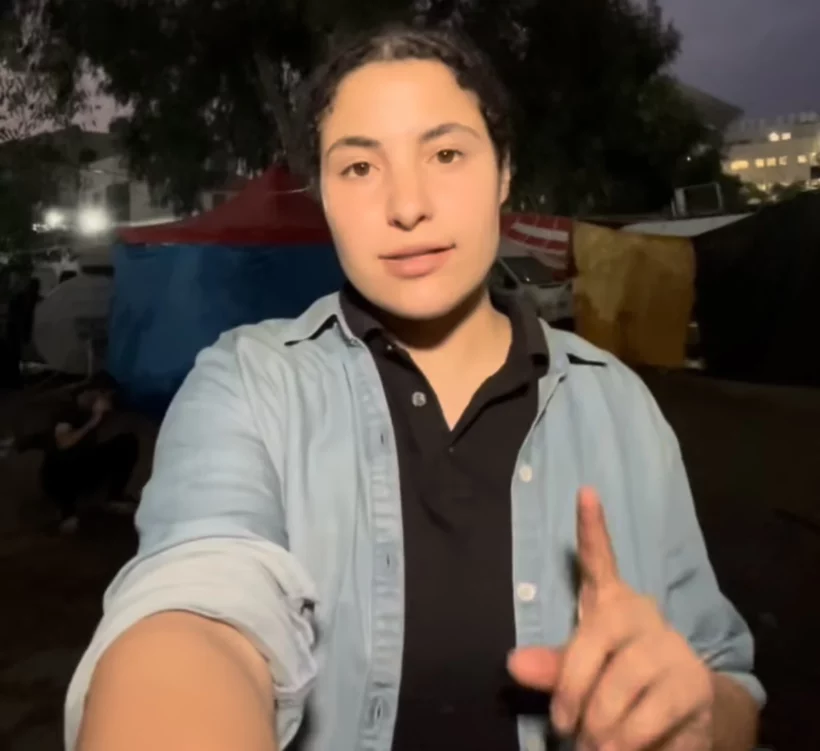Bisan Owda, a 25-year-old journalist from Gaza, recently expressed a bleak outlook: ‘I no longer have any hope of survival…I am certain that I will die in the next few weeks or maybe days.’ Bisan’s harrowing sentiment reflects the dangerous reality journalists face, risking their lives to expose the brutal truths obscured by the fog of war.
By Nour Jaghama and Melissa Garriga
Bisan Owda and other Palestinian reporters, such as Motaz, another courageous photojournalist from the Deir al-Balah refugee camp, stand as unsung heroes amid a devastating genocide. Bisan, tearfully acknowledging the imminent danger she faces, and Motaz transitioning from documenting to surviving underscore the extraordinary courage of Palestinian journalists determined to unveil the truth.
In contrast, mainstream Western media, epitomized by The New York Times, presents a stark disparity. Instead of amplifying the voices of individuals like Bisan and Motaz, major publications propagate a narrative that perpetuates misinformation and greenlights the ongoing tragedy.
The toll in Gaza is staggering—over 20,000 lives lost, including nearly 10,000 innocent children. Amidst the ruins of homes and the echoes of airstrikes, it becomes clear that the valiant efforts of these journalists serve as our only window into the extent of this horror.
Regrettably, The New York Times is failing to report the situation accurately. Its persistence in publishing misleading information not only aids in spreading propaganda but also follows a historical pattern. The current reporting echoes the publication’s prior engagement in a misinformation campaign preceding the U.S. invasion of Iraq, resulting in the deaths of hundreds of thousands of innocent Iraqis. The New York Times is failing an open-notes test it has taken many times.
Notably, instead of reporting on the confirmed cases of genocide, the New York Times seems fixated on fake controversies sparked by controversial lawmakers such as Rep. Elise Stefanik (R–N.Y.) that feed into the false idea that supporting Palestinians and demanding an end to the genocide is antisemitic. This type of reporting creates a false sense of danger and weaponizes people into rejecting the Palestinian struggle as the human rights issue it is.
As the Israeli military intensifies its attack on Gaza, the urgency for accurate reporting becomes paramount. Netanyahu’s unwavering pursuit of genocidal goals, evidenced by the bombing of schools, hospitals, and UN buildings, demands unfiltered attention. Strikingly, Israeli leaders have laid bare their intentions for ethnic cleansing through genocide, yet U.S. media remains conspicuously silent.
The betrayal of journalists like Bisan, Motaz, and countless others who put their lives on the line becomes even more egregious when juxtaposed with The New York Times’ failure to uphold journalistic standards. It is no longer a matter of misguided reporting; it is the perpetuation of a historical pattern that prioritizes profit and imperialism over truth and justice.
Western media has the potential to be a catalyst for change. We have seen the impact of unfiltered reporting during the Vietnam War when journalists chose to reveal the truth, irrespective of government constraints. There are the equivalents of the Tet Offensive and the My Lai Massacre currently being in Gaza by Israel. Any reporting by Western media that doesn’t center its context around that is a disservice to humanity.
News reporting, at its core, should be about saving lives. Instead, influential publications opt to provide manufactured consent for violence and oppression, holding the line for war criminals while the atrocities unfold in real-time. In doing so, this makes publications like the New York Times complicit in the ongoing genocide in Palestine, mixing the blood of innocent Palestinians with that of those murdered in Iraq twenty years ago—shame on the New York Times and all.
Nour Jaghama is CODEPINK’s Palestine and Iran Campaigner.
Melissa Garriga is the communications and media analysis manager for CODEPINK. She writes about the intersection of militarism and the human cost of war.






